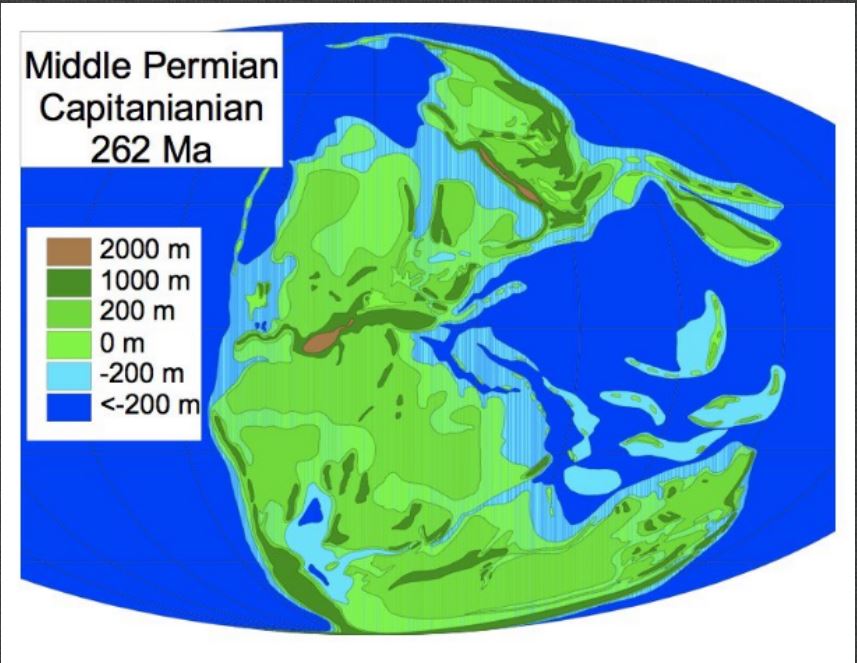Mass Extinction in the Capitanian Age – Monday Map
Major Extinction Event Previous Missed By Science
According to a paper published in the Geological Society of America Bulletin

Another Near Miss
In the Svalbard archipelago, far to the north of Scandinavia is the island of Spitzbergen. There scientists have discovered what appears to be strong evidence of sixth major extinction on earth, which had been left out of the history of our home planet. Similar mass extinctions have killed off over 90% of all life on Earth.
According to an article a depletion of oxygen in the seas wiped out brachiopods, marine animals whose shell resembles the logo of Shell Oil, during the Capitanian Age of the Permian period, about 260 million years ago, some 30 million years before the first dinosaur. This was likely do to extreme volcanic activity.
Virtually no soft tissue from plants and animals can be detected from so long ago, so scientists rely on hard shells of marine life, since bones had yet to evolve.
Abstract of the Article
The controversial Capitanian (Middle Permian, 262 Ma) extinction event is only known from equatorial latitudes, and consequently its global extent is poorly resolved. We demonstrate that there were two, severe extinctions amongst brachiopods in northern Boreal latitudes (Spitsbergen) in the Middle to Late Permian, separated by a recovery phase. New age dating of the Spitsbergen strata (belonging to the Kapp Starostin Formation), using strontium isotopes and δ13C trends and comparison with better-dated sections in Greenland, suggests that the first crisis occurred in the Capitanian. This age assignment indicates that this Middle Permian extinction is manifested at higher latitudes. Redox proxies (pyrite framboids and trace metals) show that the Boreal crisis coincided with an intensification of oxygen depletion, implicating anoxia in the extinction scenario. The widespread and near-total loss of carbonates across the Boreal Realm also suggests a role for acidification in the crisis. The recovery interval saw the appearance of new brachiopod and bivalve taxa alongside survivors, and an increased mollusk dominance, resulting in an assemblage reminiscent of younger Mesozoic assemblages. The subsequent end-Permian mass extinction terminated this Late Permian radiation.
Received 7 October 2014.
Revision received 27 January 2015.
Accepted 4 March 2015.
Full text version of the article can be downloaded for free at the GSoA Bulletin website HERE